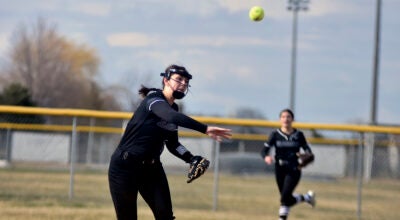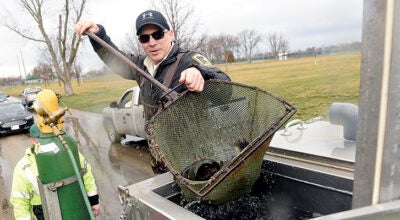Others’ opinion: Baseball fans need data on foul balls
Published 5:06 am Friday, December 13, 2019
Star Tribune
Distributed by Tribune Content Agency, LLC.
Following high-profile incidents in which people attending Major League Baseball games, including children, have been seriously injured by line-drive foul balls, teams have been working to extend protective netting at ballparks. The Minnesota Twins deserve credit for being among the first to respond several years ago and for staying ahead of league guidelines, last week announcing plans for the third netting extension in five years at Target Field. Nonetheless, the approaches taken by MLB’s 30 teams have varied. If such a strategy is to be supported, the next best step is for the league to make data on foul-ball risks available to the public.
The Twins have argued for nuance. “Given that every ballpark is different and that there is not a single, ‘cookie-cutter’ solution applicable across the industry,” a team representative wrote to an editorial writer, “every Twins decision regarding netting has been made with Target Field’s geometry in mind, and has been informed by a variety of sources, including Major League Baseball best practices, consultants and fan feedback, among others.”
These safety improvements would be most comforting if quantified. While statistics about baseball are abundant to the point of esoterica, official information about foul ball velocity, landing spots and injuries in the stands is lacking. That’s one reason the Star Tribune Editorial Board called earlier this year for netting to be extended to the outfield walls in all major league parks.
The precision of the Twins’ latest adjustments — an additional 85 feet from the previous endpoint and 8 feet above the previous height along the left field line; 65 feet longer and 7 feet higher along the right field line; and 3 feet higher above the dugouts — suggests that the team and its consultants are not merely eyeballing the situation. However, the team declined a request from the Editorial Board to elaborate on any data used.
The desire for detailed information is shared by two U.S. senators. According to the New York Times, “Richard Durbin and Tammy Duckworth, both Democrats from Illinois, wrote [in a letter to MLB Commissioner Rob Manfred] that making more data about injuries available to the public — and creating an injury registry — would ‘help evaluate the voluntary safety measures that many teams are implementing.’?”
The senators noted that baseball fans have had to rely upon media reports, “which can lead to misinformation and confusion.” Prominent among those reports — about which we’d express gratitude — is one by Bloomberg News in 2014 estimating that foul balls were injuring nearly 1,800 fans per season and one by the website FiveThirtyEight this year suggesting that the greatest danger is just past the dugouts, spots that until recently were not sufficiently protected in many parks. A report by NBC news allows readers to compare netting at the 30 major league ballparks as of its October publication date. Links to each of these articles are available in the online version of this editorial.
The teams also face pressure from opponents of netting, who consider it an obstacle to their experience. (The Twins have sought to balance this with a style — thin, knotless, green-hued — that can blend in with the field of play and can be rolled up so players and fans can interact before games.) Data would help this cause, too, if it supported less extensive netting.
Opponents also note that many who attend games these days succumb to the distraction of electronic devices, and they argue that people should be expected to take more responsibility for their own safety. That point is fair, as it is in many contexts, but is overstated.
“This is not an issue of fans not paying attention to the game,” Jackie Howell, a fan and blogger, told the Baltimore Sun this year as the Orioles were planning extra netting at Camden Yards. “To be able to react in an instant to a broken bat or a line-drive foul coming at you at 100 miles per hour? That’s why major leaguers get paid millions of dollars. They can do that. Most fans can’t.”




